Bourbon Glazed Corned Beef Brisket
A Southern take on a St. Patrick’s Day classic, glazed corned beef brisket is basted with bourbon, orange juice, whole grain mustard and brown sugar.
The Cooking Bride is a participant in the Amazon Services LLC Associates Program, an affiliate advertising program designed to provide a means for sites to earn advertising fees by advertising and linking to Amazon.com.
Corned beef and cabbage … love it or hate it? As a kid, I was definitely on the hate side. A hunk of salty meat boiled for hours, usually served with a side of bland boiled potatoes and cabbage. Gross. As I ventured into adulthood and began learning how to cook, I discovered that even though boiling is the most conventional way to cook corned beef, it’s not the only way.
What is corned beef?
Corned beef is made from brisket, a cut of beef taken from the lower chest region of a cow. It has been salt cured, meaning it has been treated with a combination of salt, sugar, and nitrite for the purpose of preservation. In the days before commercial refrigeration, salt curing was a popular way to preserve perishable items. The word corned may refer to the large pieces of saltpeter use to preserve the meat.
Why do we eat corned beef and cabbage on St. Patrick’s Day?
While a corned beef dinner is typically associated with St. Patrick’s Day and the Irish, it’s not an Irish national dish. During the 17th century, Ireland was a major producer of corned beef. However, most of its citizens could not afford to eat it. Corned beef didn’t rise in popularity among the Irish until they began immigrating to the United States in the 19th century. What was considered a luxury item in their native country was suddenly cheap and readily available in their new home.
Ingredients and tools you will need
Get ready to make the best corned beef recipe you’ve ever had. To prepare this St. Patrick’s Day dinner, you will need:
- 5 pounds corned beef brisket with seasoning packet
- 10 small red potatoes washed, quartered
- 5 carrots peeled, cut into 2-inch pieces
- 1 cabbage sliced
- 1-2 tablespoons olive oil
- Salt and pepper to taste
- 1/2 cup orange juice
- 3/4 cup packed light brown sugar
- 2 tablespoons water or corned beef braising liquid
- 1 teaspoon whole grain mustard
- 1/4 cup bourbon
- 1 tablespoon cornstarch
- Large stock pot with lid – 8-quart minimum
- Sheet pan or 9 x 12 x 2-inch baking dish
- Medium saucepan – 2.5 quart minimum
Boil the corned beef
There are two reasons to boil corned beef brisket during preparation. First, brisket is a tough cut of meat. It requires a longer cooking time in order to tenderize the meat. Second, because corned beef is preserved in salt, obviously it’s going to salty. Boiling helps to remove some of the saltiness of the beef used during preservation.
Most store-bought corned beef has already been cured and is sold with a little packet of pickling spices that may include mustard seed, peppercorns, bay leaves, dill seed and juniper. If you have a homemade pickling spice recipe you prefer, feel free to use that instead. Place the corned beef in a large pot and completely cover it by two inches with cold water. How much water you need will depend on the size of both your pot and the corned beef. Add the contents of the seasoning packet and bring the water to a boil over medium-high heat.
Reduce the burner to medium-low heat, cover and boil the corned beef for three hours. Be sure to check the water levels periodically and add additional water to the pot if it starts getting too low. This step can be completed a couple days in advance. Just be sure to allow the corned beef to cool completely, then wrap it up in foil or plastic wrap to prevent it from drying out and store it in the refrigerator until you are ready to proceed to the next step.
Before you discard the water from the pot you boiled the corned beef in, reserve two tablespoons. We’re going to use it a little later to make the glaze.
Prepare the bourbon glaze
I’m of the opinion that everything tastes better with bourbon. This bourbon glaze is sweet and really balances out the saltiness of the corned beef.
In a small saucepan, combine the orange juice, brown sugar, reserved corned beef poaching broth, whole grain mustard and bourbon. Whisk in the cornstarch until the sauce is smooth. Bring the glaze to a boil and cook for about 1-2 minutes until the glaze has thickened.
Apply the glaze and roast
Preheat the oven to 350 degrees F. I like to roast a few vegetables, such as thinly sliced wedges of cabbage, red potatoes and sliced carrots, in the bottom of the roasting pan with the corned beef. Trust me, roasted cabbage is SO MUCH BETTER than boiled. I simply coat the veggies with olive oil, salt and pepper and arrange them in an even layer on the bottom of a baking pan.
Brush the bourbon glaze liberally over the outside of the corned beef. Nestle the corned beef among the vegetables in the center of the baking pan. Place the pan in the oven and roast for 10 minutes. Apply more glaze to the top of the meat, then return it to the oven for an additional 10 minutes. Repeat this one more time, for a total roasting time of 30 minutes.
The vegetables won’t quite be cooked through by this time, but we don’t want to overcook the brisket. Remove the brisket from the pan and set it on a cutting board. Wrap it in aluminum foil and allow it to rest. Turn on your broiler, return the vegetables to the oven and continue to roast them until they start to brown, about 5-10 more minutes.
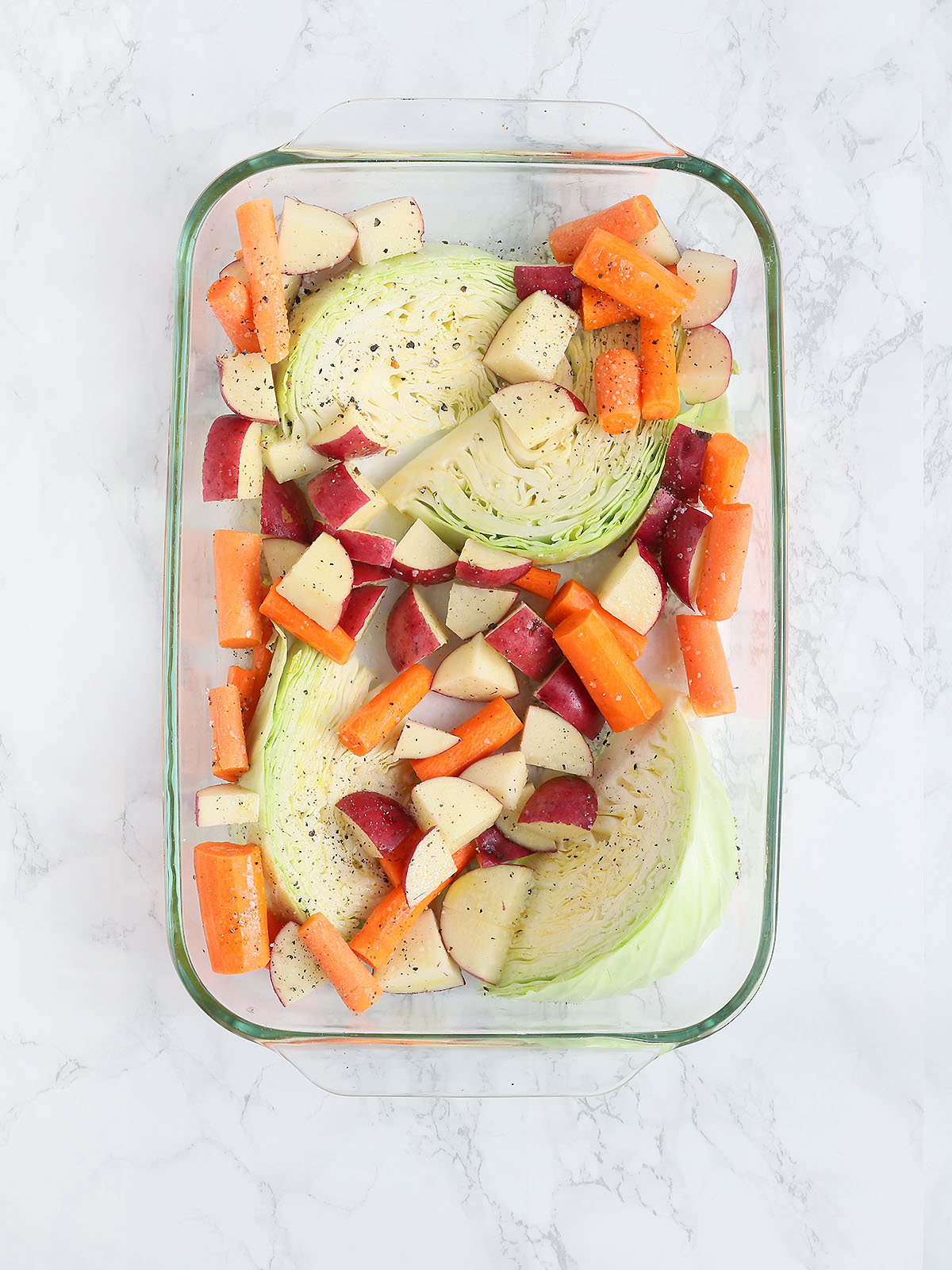
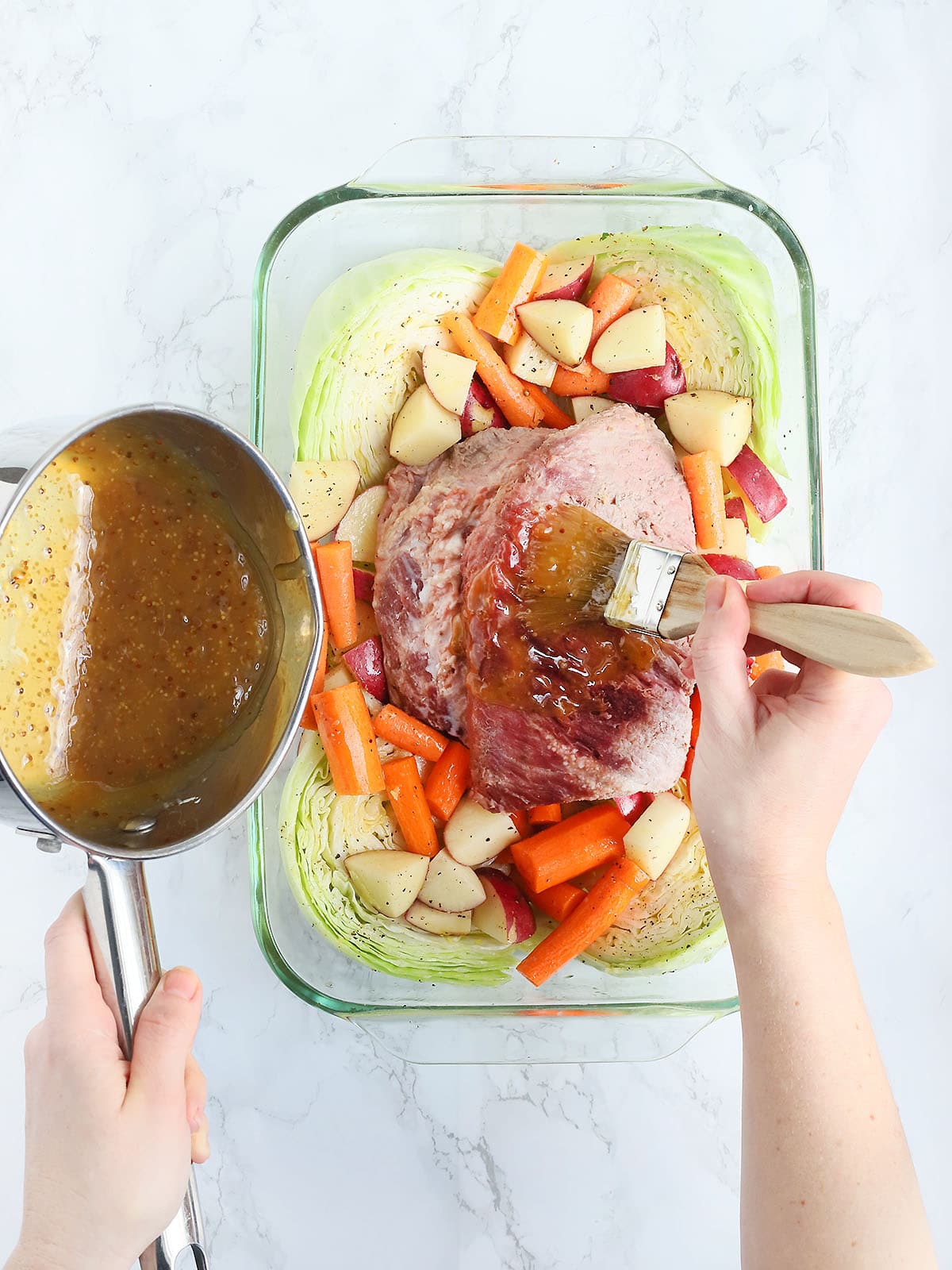
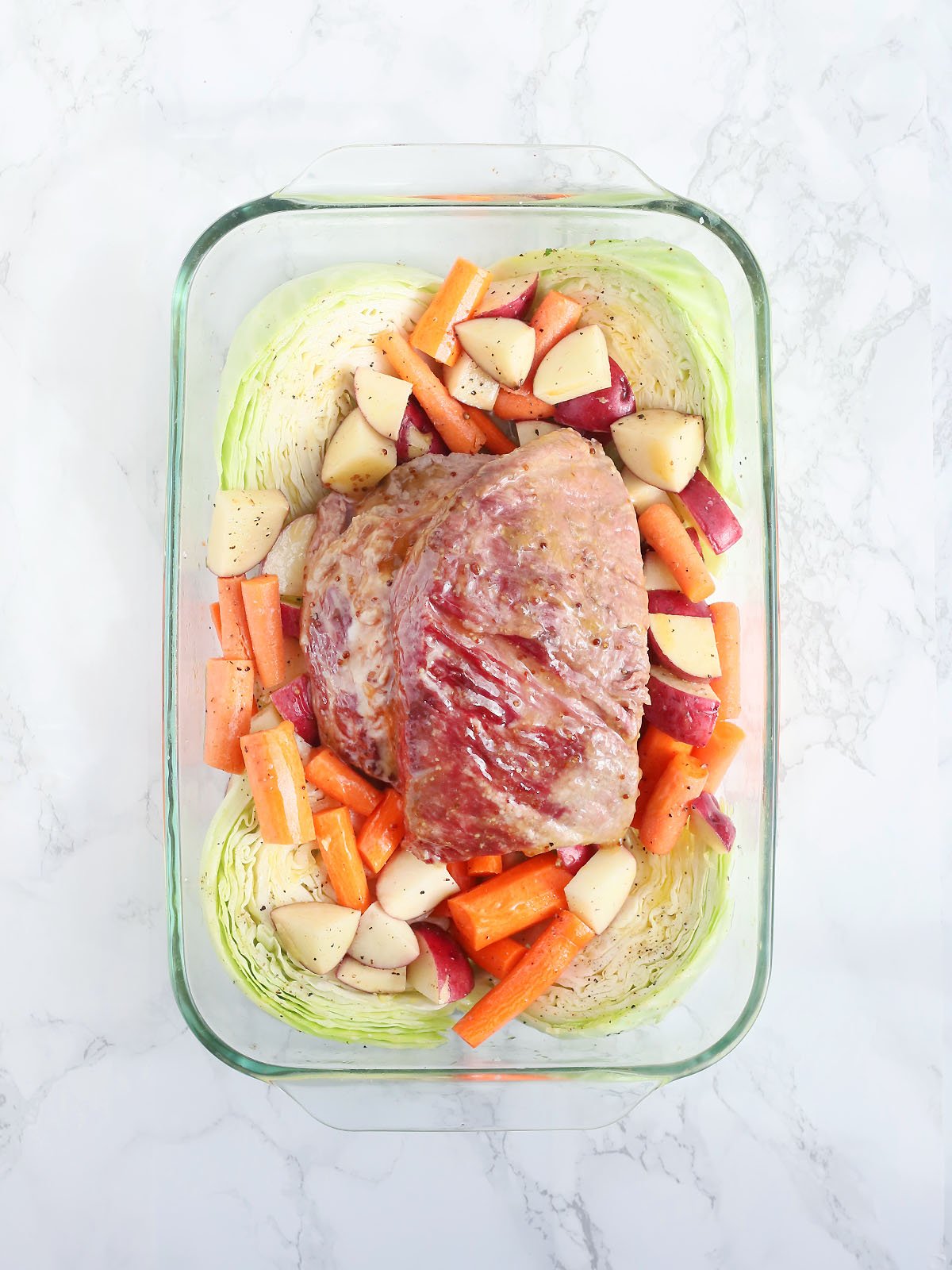
Slow cooker instructions
Place the seasoned potatoes and carrots in the bottom of the slow cooker. Arrange the boiled corned beef on top of the vegetables. Apply half the glaze. Cook on high for six hours or on low for eight hours. Remove the lid and add the sliced cabbage. Glaze the corned beef with the remaining glaze. Return the lid to the Crock Pot and cook for one additional hour.
Instant pot instructions
If making this in and electric pressure cooker, you can skip boiling the corned beef brisket separately. Place the unboiled brisket in Instant Pot. Add four cups of water and the spice packet. Select the MANUAL option and set the timer for 90 minutes. Allow the steam to vent naturally before opening the lid.
Arrange the corned beef over the seasoned vegetables in a baking sheet pan or baking dish. Apply 1/3 of the glaze over the top of the corned beef. Roast the corned beef and the vegetables for 30 minutes, applying more glaze to the beef every 10 minutes. Remove the cooked corned beef and place it on a cutting board to rest. Preheat the broiler and broil the vegetables for 10 minutes.
The Proper way to cut corned beef brisket
There is a right and a wrong way to slice a corn beef brisket. Look closely at the brisket and you should notice the muscle fibers. If you slice the brisket parallel to those muscle fibers, or with the grain, your bites will be tough and chewy. However, if you slice the brisket perpendicular to (across) the muscle fibers, or against the grain, and the bites will the tender. This YouTube video gives a great visual demonstration on the proper way to cut a brisket. Serve the sliced corned beef with the roasted vegetables and additional glaze if desired.
Storage, freezing and reheating instructions
Storage: Allow the leftover corned beef to cool completely before transferring it to an airtight container. The bourbon glaze can also be stored in a smaller, separate container. Store the glaze and the brisket in the refrigerator and consume within four days.
Reheating: Bourbon glazed corned beef with the glaze can be reheated for a minute or two in the microwave. You can also place it in a covered dish and reheat it in the oven at 350 degrees for 10-15 minutes. The glaze can be reheated in a small saucepan for 5-10 minutes.
Freezing: Place the corned beef in an airtight freezer bag or vacuum-sealed bag. Freeze for up to three months. Thaw completely before reheating.
Frequently asked questions
Plan to serve at least 1/2 a pound of corned beef per person.
Yellow mustard can be used as a replacement. However, I suggest Dijon mustard or spicy brown mustard as a better substitute.
You can replace the bourbon with whiskey, Scotch, cognac or dark beer. Non-alcoholic options include ginger beer or apple cider vinegar.
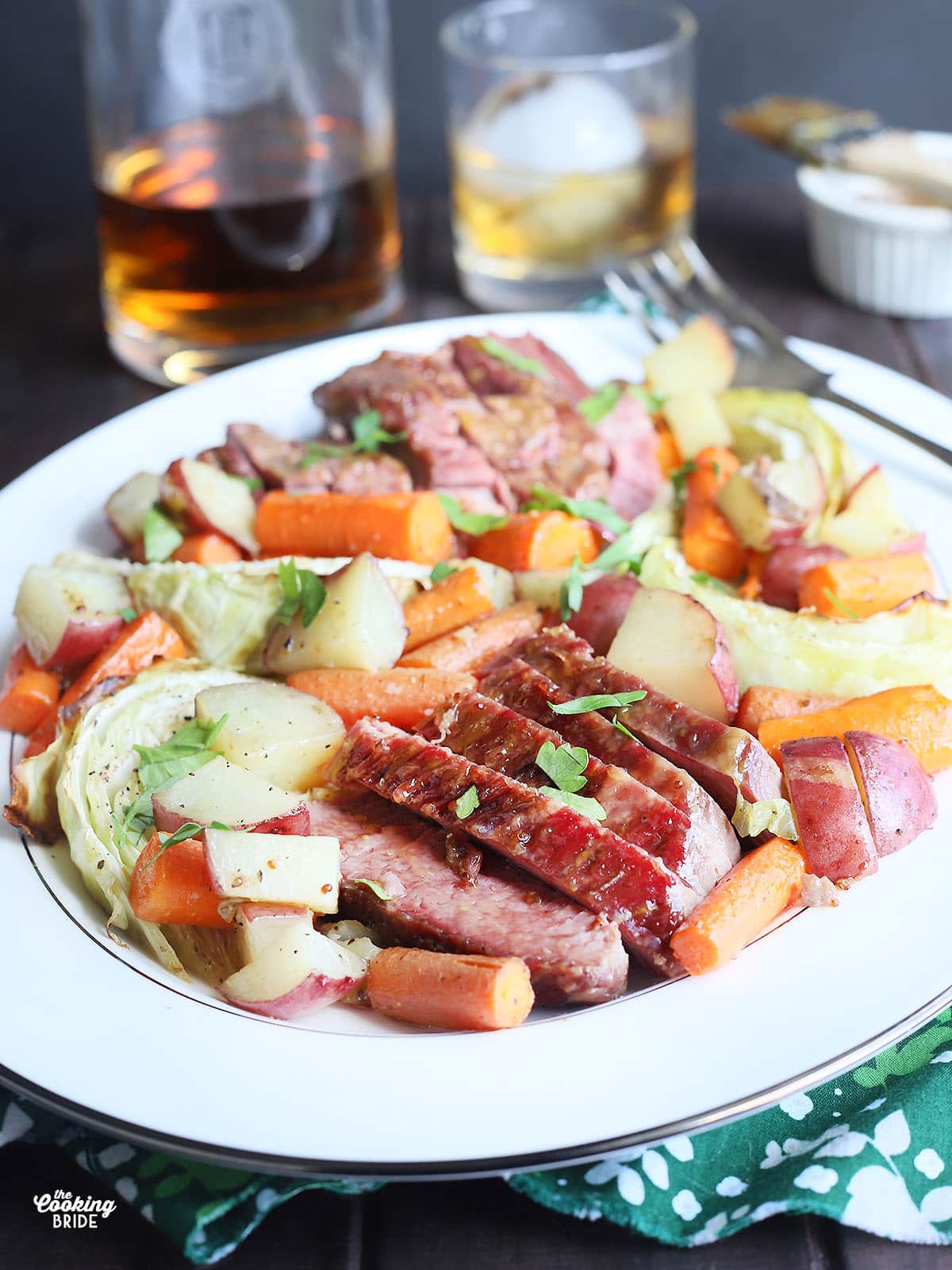
What to serve with bourbon glazed corned beef
- Stir Fried Brussels Sprouts
- Mashed Rutabaga with Bacon and Cheddar Cheese
- Cheesy Ranch Roasted Potatoes
Leftover corned beef recipes
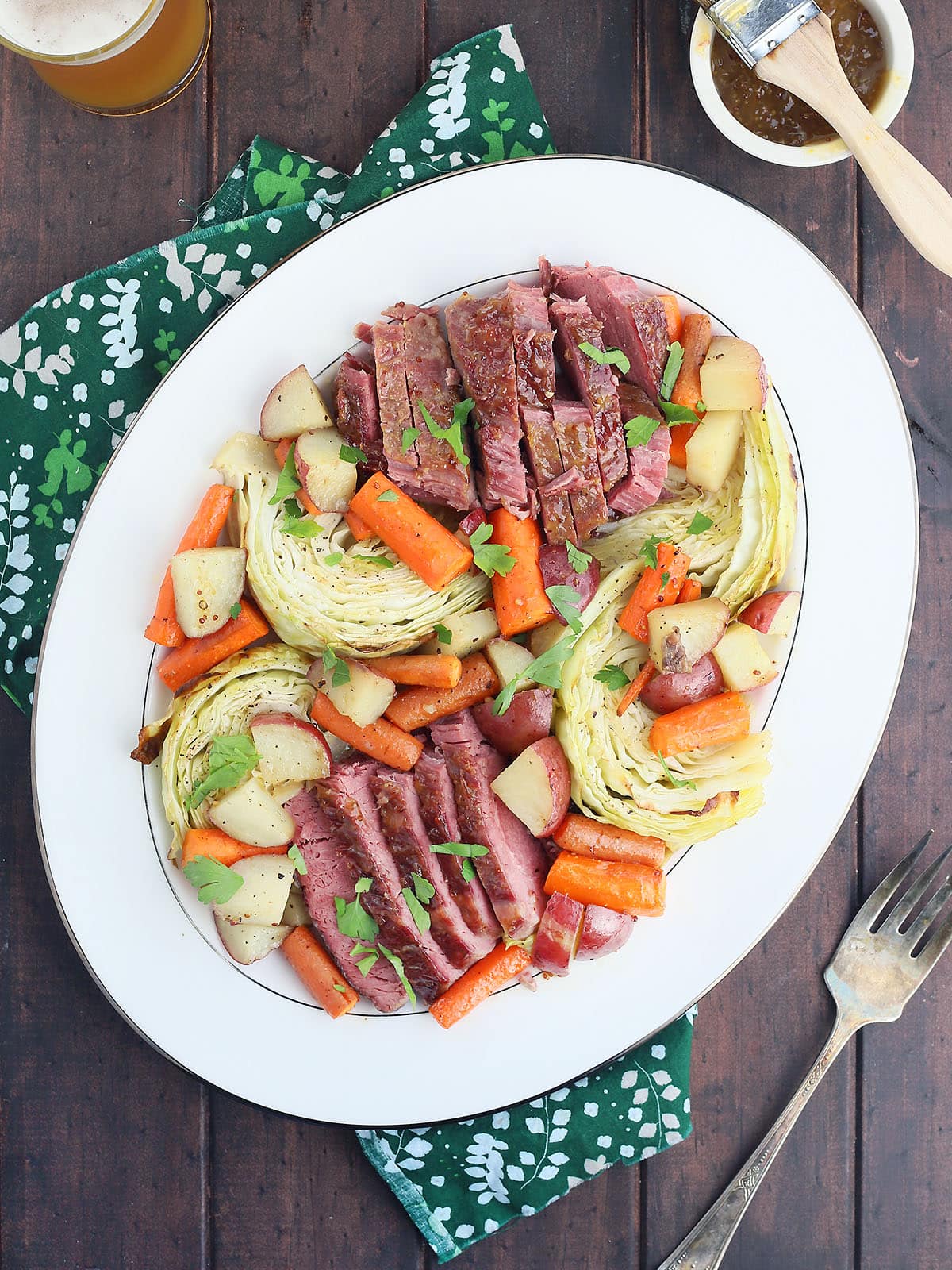
Bourbon Glazed Corned Beef Brisket with Roasted Vegetables
Ingredients
- 5 pounds corned beef brisket with seasoning packet
- 10 small red potatoes washed, quartered
- 5 carrots peeled, cut into 2-inch pieces
- 1 cabbage sliced
- 1-2 tablespoons olive oil
- Salt and pepper to taste
Glaze:
- 1/2 cup orange juice
- 3/4 cup packed brown sugar
- 2 tablespoons water or corned beef cooking liquid
- 1 teaspoon whole grain mustard
- 1/4 cup bourbon
- 1 tablespoon cornstarch
Instructions
- Place the brisket in a large stockpot. Cover with water and add the seasoning packet.
- Bring the pot to a boil, then simmer for about 3 hours until the meat is tender. Reserve 2 tablespoons of the cooking liquid for the glaze. When the meat is done, remove it from the pot and discard the cooking liquid.
- In a small saucepan, combine the orange juice, brown sugar, corned beef juice, mustard, and bourbon.
- Whisk in the cornstarch until smooth. Bring the liquid to a boil and cook until the glaze has thickened, about 1-2 minutes.
- Preheat the oven to 350 degrees.
- Arrange the vegetables in a single layer on a roasting pan. Drizzle them with olive oil and season with salt and pepper.
- Place the corned beef in the roasting pan on top of the vegetables. Apply the glaze liberally over the top of the entire corned beef.
- Place the corned beef and vegetables in the oven. Glaze the corned beef every 10 minutes for 30 minutes.
- Remove the corned beef from the oven and set it on a cutting board to rest for 15 minutes.
- Turn on the broiler and continue to roast the vegetables until they start to brown, about 5-10 minutes.
- Slice the corned beef against the grain. Serve over the roasted vegetables. Drizzle with the glaze.


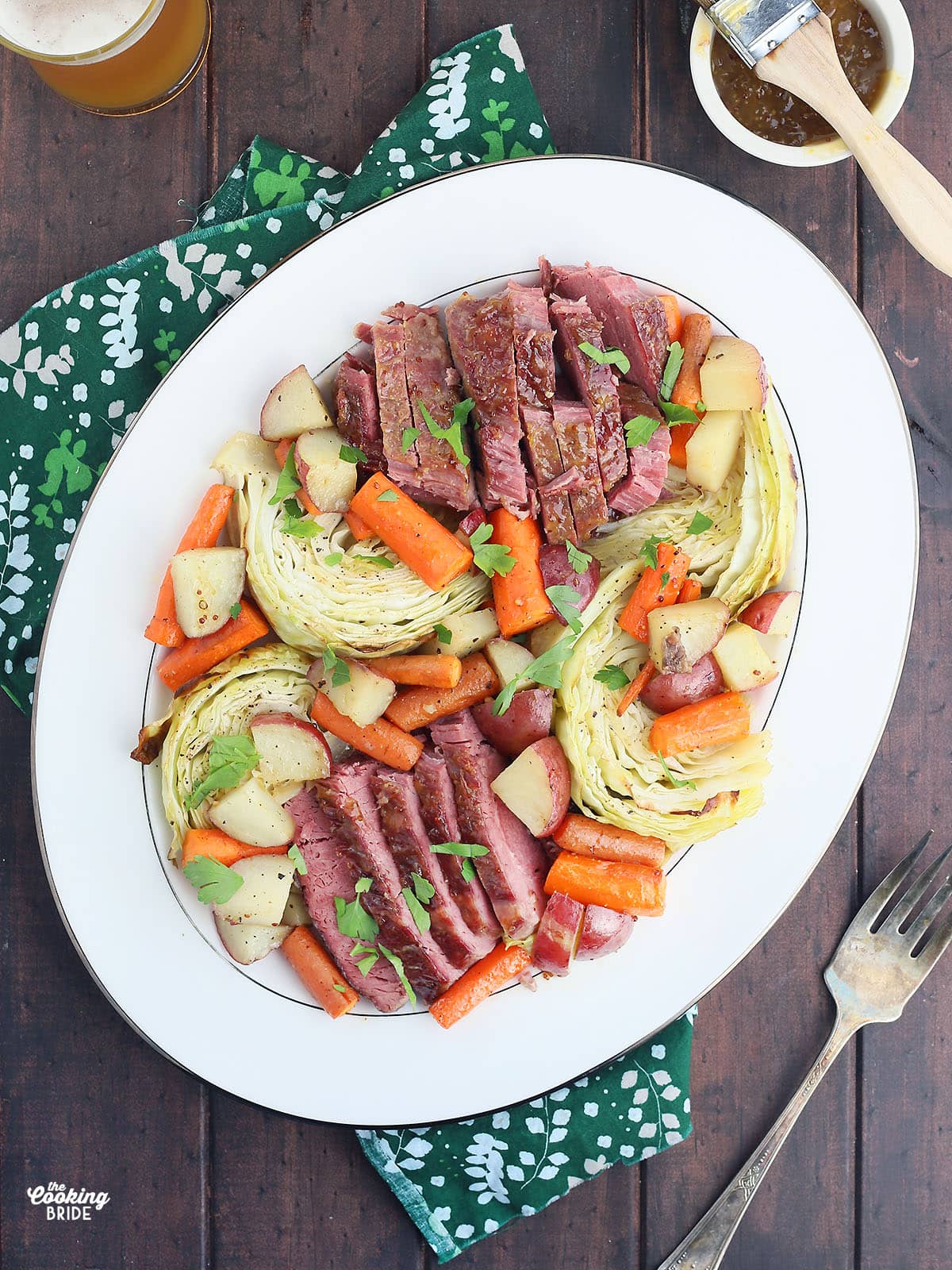
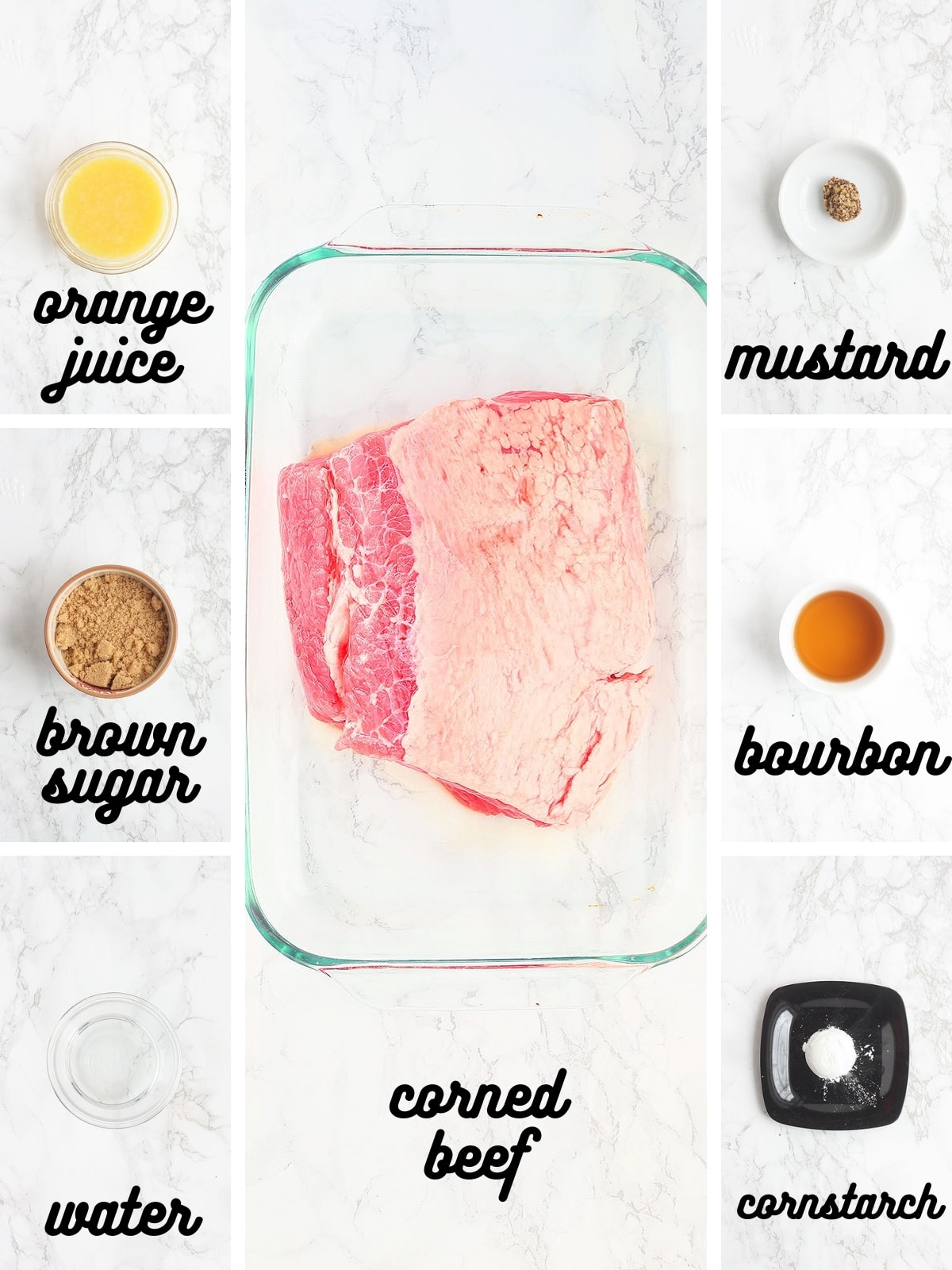
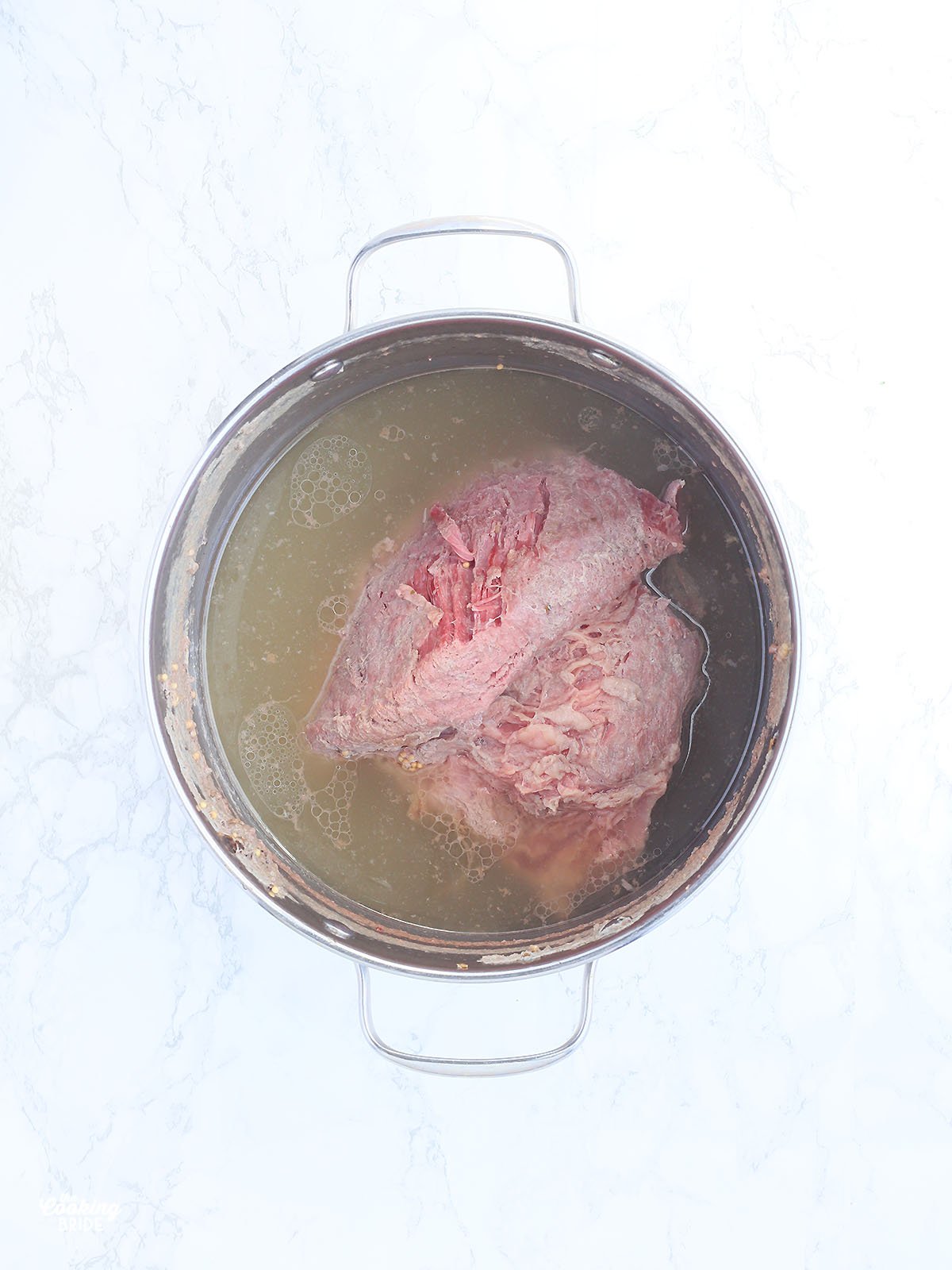
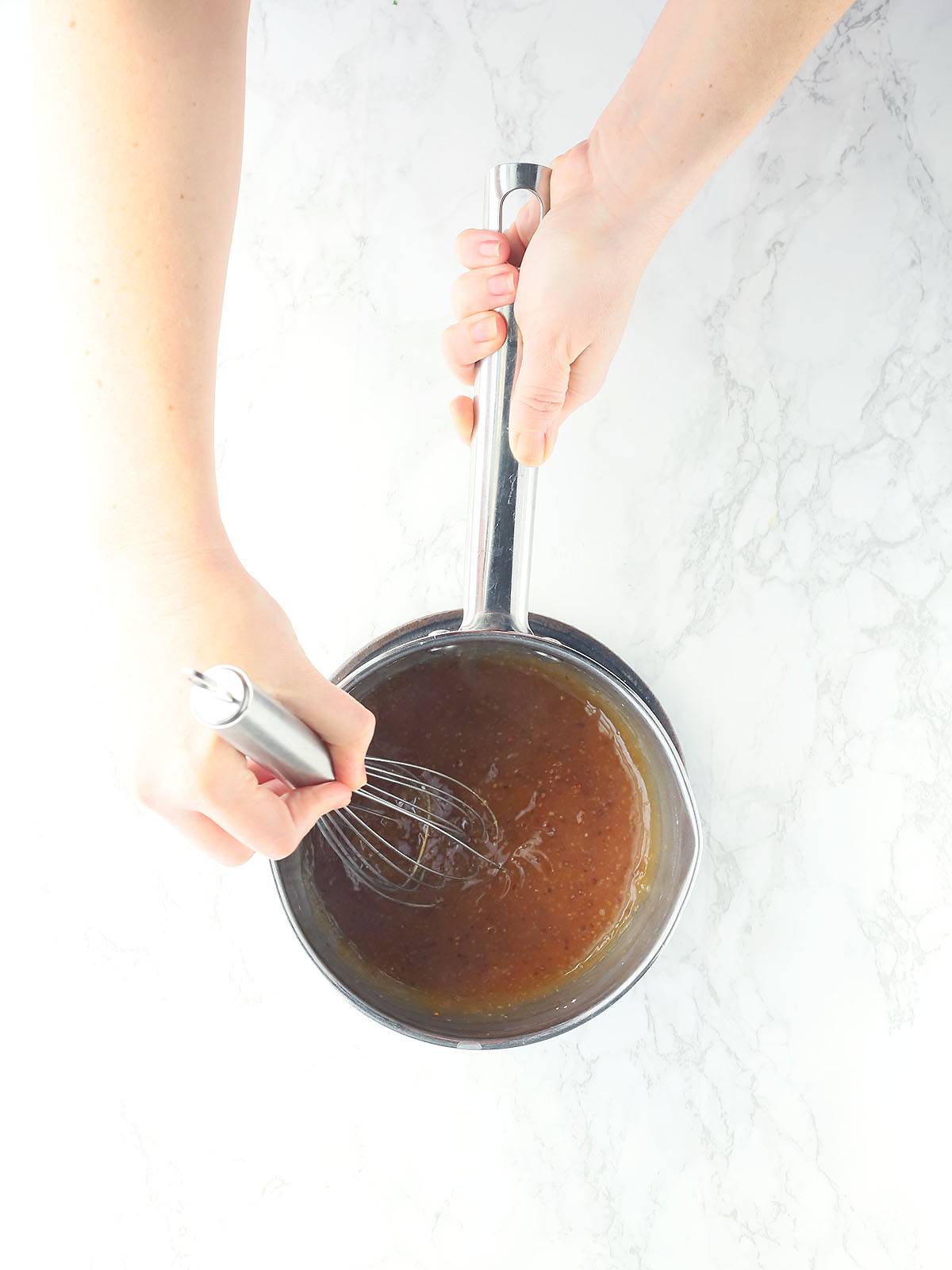



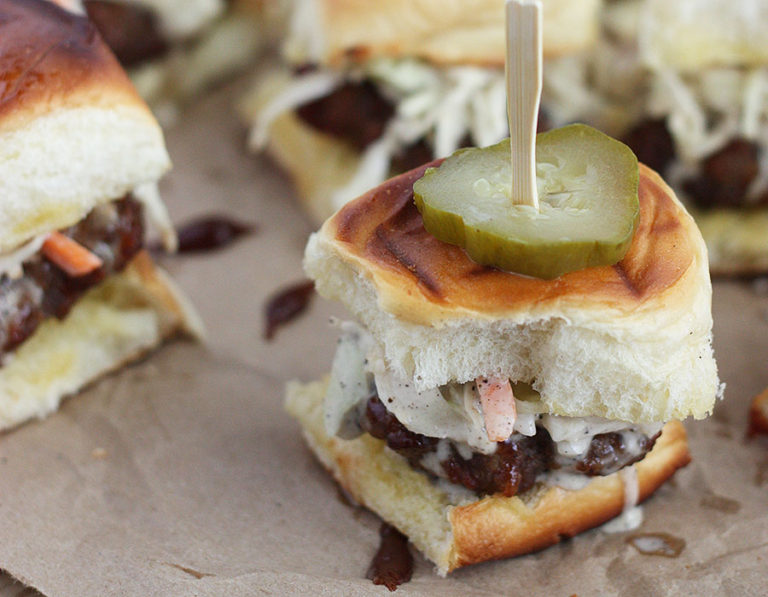
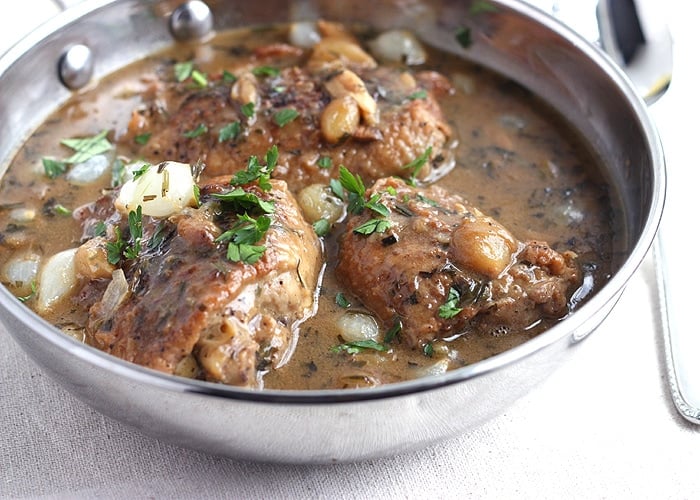
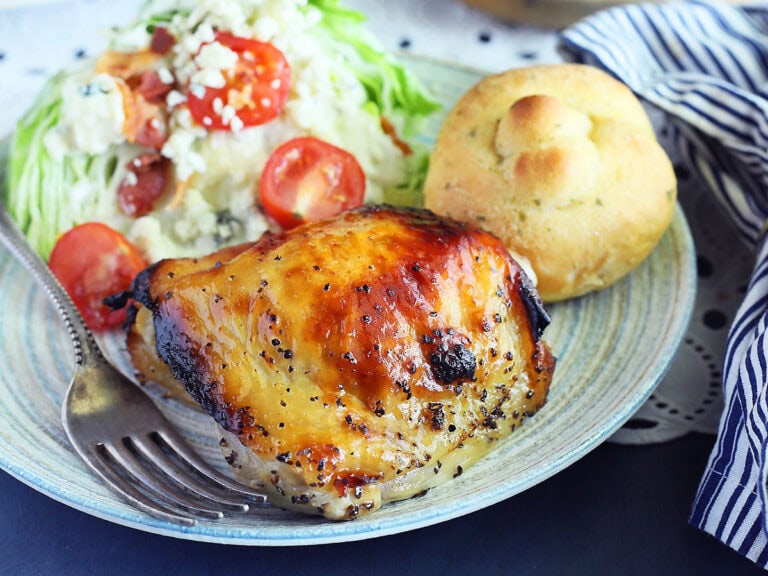
I liked the recipe and the only thing I changed was the booze.
I don’t care for bourbon so I used Tulamore Dew Irish whiskey , being Irish American .
This is just a good traditional way to prepare Corned Beef. I have also roasted in the oven and not boiled and in that way you prevent from losing much flavor. The title said a dish from Ireland before clicking on to your site. You would be hard pressed to find Corned Beef in Ireland except for tourist destinations. Corned Beef is an English invention and they eat a lot of it. But I love our traditional American St Patrick’s day version.
Great! I’m so glad you enjoyed it!
We enjoyed this recipe on St Patrick’s Day! My husband is making this glaze again for the Easter Ham! Thanks!
Love the idea of roasting veggies instead–and bourbon belongs on everything!